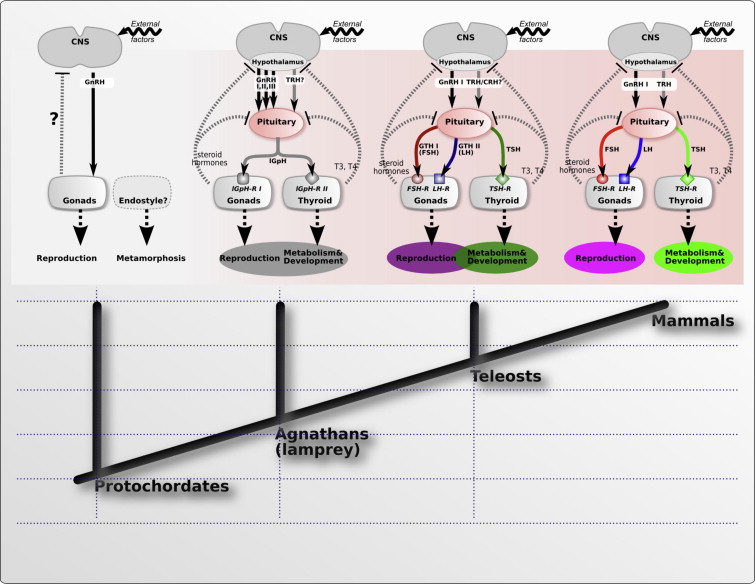Neuroendocrine control of reproduction
Neuroendocrinology is the study of the widespread interactions among the nervous system and the endocrine system, involving the biological features of the cells that participate, and how they functionally correspond. The nervous and endocrine systems frequently act altogether to control the physiological procedures of the human body. Neuroendocrinology occurs from the recognition that the brain, specially the hypothalamus, controls secretion of pituitary gland hormones, and has consequently extended to investigate several inter-connections of the endocrine and nervous systems.

We are examining the neuroendocrine bases of seasonal changes in reproductive physiology in birds. Most bird species which live at middle and high latitudes reproduce seasonally. In these species, raises day length in the spring is the main factor responsible for development of the reproductive system and for the behavioral changes which characterize the breeding season and accompany this development. Prolonged exposure to long days, though, ultimately induces photo-refractoriness, that is defined as a loss of sensitivity to day length which was formerly stimulatory. Photo-refractoriness is mediated centrally and causes regression of the reproductive system, though little is known regarding the central processes included. We focus on the neural bases of photo-refractoriness with specific attention to role of the brain peptide, gonadotropin-releasing hormone (GnRH) and its predecessor, PrePro-GnRH. We are also studying species which do not follow the usual above pattern of seasonal changes. These involve species which can reproduce year-round or nearly therefore and, might, hence, not be photoperiodic. Also under investigation are species which breed seasonally, though in which development and regression of the reproductive system emerge to be partially or wholly controlled by factors other than day length. This is the situation of so-called opportunistic breeders. The opportunistic species frequently live in unpredictable and extreme environments like the arctic and deserts and might time breeding as a function of factors like local food availability or precipitation.